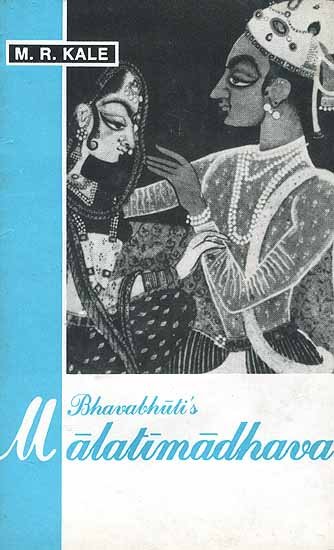Malatimadhava (study)
by Jintu Moni Dutta | 2017 | 52,468 words | ISBN-10: 8120813057 | ISBN-13: 9788120813052
This page relates ‘Works of Bhavabhuti’ from the English study on the Malatimadhava of Bhavabhuti:—A Prakarana type of Drama in ten acts revolving around the love-story of Malati (from Padmāvatī) and Madhava (from Vidarbha). This study discusses the history of its author and the literary, social, religious, historical and cultural aspects of the Malatimadhava.
Part 1c - The Works of Bhavabhūti
In the Sanskrit literature, there are three compositions which are ascribed to Bhavabhūti namely:
- the Mahāvīracarita,
- the Mālatīmādhava and
- the Uttararāmacarita.
A brief discussion of these works has been given below.
(a) The Mahāvīracarita:
Bhavabhūti has culled the theme of this work from the Rāmāyaṇa with slight variation. It aimed at depicting Rāma’s adventures.This work consists of seven acts and here the life of Rāma is found up to his accession to throne of Ayodhyā. Rāma the hero of this play is an ideal man. He is depicted as the personification of god. He is magnanimous and valiant. He has high regard for the qualities of Jāmadagnya, Vāli and Rāvaṇa and concern for the common man. Here, Bhavabhūti has shown his skill in depicting Sītā as a modest, virtuous and loving woman. A cursory glance on the play suggests that the dramatist has achieved a fair success in characterisation. The predominant sentiment in the Mahāvīracarita is Heroic (vīra) sentiment. Literally, this work has considerable merits. It is a treasure house of idioms of Sanskrit language. The geographical and historical accounts that reflect in the play deserve special attention.
(b) The Mālatīmādhava:
The Mālatīmādhava is a Prakaraṇa type of rūpaka in ten acts. The subjectmatter of this Prakaraṇa is the love-story of Mālatī, the daughter of Bhūrivasu, a minister of Padmāvatī and Mādhava a young man studying in the city and son of Devarāta, minister of the king of Vidarbha. With this main love story, the love story of Makaranda and Madayantikā is also skillfully portrayed. Mālatī and Mādhava meet and fall in love, but the king has determined that Mālatī will marry his favourite, whom she detaste. The plan has been made vain by Makaranda, who personates Mālatī to go through wedding ceremony with the bride-groom. Two Buddhist nuns help in uniting the hero and heroine. Here the predominant sentiment is Śṛṅgāra or Erotic.
(c) The Uttararāmacarita:
The Uttararāmacarita is Bhavabhūti’s third play. In the Uttararāmacarita, Bhavabhūti is found at his best. It is said uttare rāmacarite bhavabhūtirviśiṣyate.
Here, Bhavabhūti describes himself as:
śabdabrahmavidaḥ kaveḥ pariṇataprājñasya vāṇīmimām.[1]
The Uttararāmacarita consists of seven acts. It is the poet’s master piece. This drama describes the story of the Uttarakāṇḍa of Rāmāyaṇa that is abandonment of Sitā, her residence at the hermitage of Vālmīki, the birth of Kuśa and Lava and the union of Rāma and Sitā at last. Here, the predominant sentiment is Karuṇa. In this drama Bhavabhūti holds a high place by the expression of genuine pathos in the world of literature.
In the 14th century, Govardhanācārya, in his Āryāsaptaśatī wrote-cf.,
bhavabhūteḥ samvandhādbhūdhareva bhāratī bhāti/
etatkṛtakārūṇye kimanyathā roditi grāvā//
Footnotes and references:
[1]:
Uttararāmacarita,VII.20
